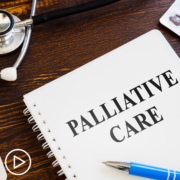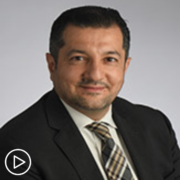Are There Predictors That an MPN May Be Progressing?
Are There Predictors That an MPN May Be Progressing? from Patient Empowerment Network on Vimeo.
Many people living with MPNs are worried about progression. Dr. Raajit Rampal talks about possible indicators and discusses ongoing research to learn more about disease progression.
Related Programs:
Transcript:
Katherine Banwell:
How do you know when it’s time to change treatments?
Dr. Raajit Rampal:
Well, I think really two things. One is if we aren’t meeting our goals like we just talked about. But the other aspect of that is if we are incurring toxicities that are just not tolerable to the patient and that’s a reason to change therapy always.
Katherine Banwell:
Many patients, of course, worry about disease progression. Are there key predictors or tests for progression that patients should know about?
Dr. Raajit Rampal:
This is a key area of investigation currently. I think one of the things that patients say to us so often when we meet them is what’s going to happen to me. And right now, we don’t have great prediction tools. We can say on a population level well, there is X percent of chance of progression at 15 years. That’s useful if you’re talking about a population. That’s not really useful if you’re talking to an individual. Because if I say to somebody there’s a 20 percent chance of your disease progressing to leukemia, it doesn’t really make a difference. That’s a meaningless statement because if you’re in the 20 percent who progress, it’s not a relevant statistic anymore.
It’s sort of a binary thing. We’ve got to do better at developing this. This is something that the MPN Research Foundation is really heavily invested in in trying to identify predictive biomarkers.
If we can do that, then perhaps what we can do is say to a patient this is really what we think your actual risk is. And then, the next step is asking the question if we intervene early, can we prevent that progression from occurring. So, that’s where I think we need to go. We aren’t there yet.
Katherine Banwell:
What signs or symptoms do you look for that may indicate that the disease is progressing?
Dr. Raajit Rampal:
The blood counts are often the canary in the coal mine regardless of the disease. They can tell us if ET or PV is progressing into MF or whether MF is progressing to more of a leukemic phase. Changes in symptoms sometimes can be a harbinger of disease progression. So, Patient 2, for example, is doing really well and now, he’s having drenching sweats and losing weight. So, those types of symptoms are a sign that physical findings is the size of the spleen if it’s increasing. All of those things together give us a hint about progression.
Katherine Banwell:
Well, is there any way to prevent progression?
Dr. Raajit Rampal:
That is the million dollar question. Again, that’s where we ultimately need to be. We want to be able to intervene to a point where patients don’t get that sick. It would be amazing if we’d come to the point where we can intervene early and nobody progresses to late stage MF. Nobody gets leukemia. And I think that’s a worthy goal. That’s not something that we should think is too lofty of a goal. That should be our ultimate goal here. And a number of groups are investigating this exact question. It’s complicated and it’s going to take time. But I think that’s a worthwhile investment.























